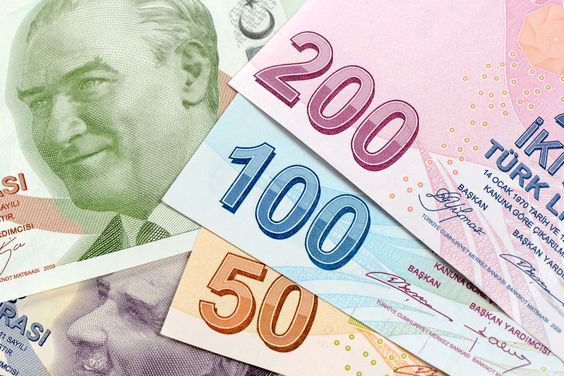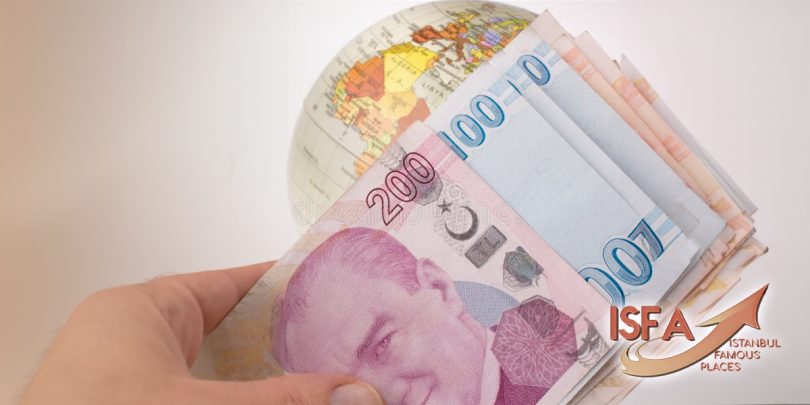Istanbul, a city in Turkey, is a beautiful vacation destination visited by scores of people each year from abroad. It is home to inspiring culture and traditions, historic landmarks, eccentric nightlife, and breathtaking views.
When visiting Istanbul, it’s important to know details of what to expect. An important thing to know is the type of money used in Turkey.
What Currency does Turkey use?
The currency used in Turkey is called the Turkish Lira. The Turkish Lira is represented by the currency code TL/TRY.

History of the Turkish Lira
The Turkish Lira was first introduced as the legal currency in 1844. This was at the time of the Ottoman Empire. It replaced the previous currency “Kurus,” which was in circulation back then. The Kurus eventually became a subdivision of the Lira.
Between 1844-1881, the Lira was valued based on two systems. It was worth 6.61519 grams of gold, and 99.8292 grams of silver. From 1881 down to 1914, the gold standard was adopted.
After the first world war, Turkey abandoned the gold system. It led to Lira losing its value. By 1946, Lira was set to the US dollar with an exchange rate of 2.80 TRY to 1 USD. In 1960, Lira further devalued as 9 TRY equaled 1 USD.
The Lira suffered further depreciation due to the chronic inflation in Turkey from 1970-1990. The Guinness Book of Records classified the Turkish Lira as the world’s third least-valued currency from 1995-1996 and 1999-2004.
In 2005, there was a further devaluation of the Turkish Lira. The Turkish Lira was then renamed the “New Turkish Lira.”
This new currency was in circulation up until the 1st of January 2009. In 2009, the currency was then renamed the Turkish Lira.
In recent years, the Turkish Lira currency has managed to stabilize. It has also gained some value against the US dollar and Euro.
How does the Turkish Lira look?
This currency can be in the form of banknotes or coins. The banknotes come in 5, 10, 20, 50, 100, and 200 TRY. The coins come in 1, 5, 10, 25, and 50 TRY. The 200 TRY banknote and the 1 TRY coin are not so common.
How can I get the Turkish Lira?
You can get Turkish Lira before traveling, or while already in Turkey. The decision to get the Lira before, or after travel is based on personal preference. It’s however recommended to get the currency while in Turkey.
This is because the exchange rate for Turkish Lira in Turkey is cheaper than the exchange rate outside Turkey. Additionally, the Turkish Lira is easier to get while in Turkey. This is because there are exchange offices at every Istanbul airport.
Another good thing about getting the Turkish Lira is that there are exchange offices located at several popular tourist attractions. So if you go out, and you’re low on currency, don’t worry, there’s probably an exchange center near you.
You should know that the Turkish Lira is an unstable currency. However, you can exchange any currency for Turkish Lira at several spots in Istanbul.
Other forms of payment in Turkey
Asides from paying in cash, there are other payment methods. These payment methods are also widely accepted in Turkey. These payment methods include credit or debit bank cards and contactless card payment.
Credit and debit bank cards, such as MasterCard and Visa, are well-accepted. They can be used for payment at restaurants, and stores across Turkey.
It is very seamless, as payment may take just seconds to minutes to complete. It saves you the stress of carrying money around. If the vendor has a working card reader, you’re good to go.
Contactless cards are also widely accepted for payment across Turkey. Like credit or debit bank cards, this payment method is seamless and takes seconds to minutes to process transactions. They have a small limit per transaction, for security reasons.
Contactless card purchases may also incur international transaction fees, which vary from bank to bank.
Why should I get the Turkish Lira?
In Turkey, it’s recommended to have some of the Turkish Lira for the following reasons:
- Firstly, you will need cash to give tips to workers at a hotel or restaurant.
- Some vendors give discounts on their items to customers who are paying in cash.
If you decide to get the Turkish Lira, we recommend that you carry small notes like 5, 10, 20, and 50 TRY.
Cash Machines (ATMs)
In Turkey, you can easily locate cash machines, as they are situated in various tourist zones.
Some cash machines may also be seen at supermarkets, stores, and banks. Most of these cash machines accept cards for withdrawals. Cards accepted include Visa, Mastercard, Maestro, Plus, or Cirrus.
It’s recommended to always check before withdrawing, as they will most times charge a withdrawal fee. Another benefit of the cash machine is, it can be used to top up your mobile phone credit.
Counterfeit notes – What to do if you get one
If you come across a note that is suspected to be counterfeit, do not panic.
Follow the steps below, if you have a currency note that is suspected to be counterfeit:
- Check the security features of the note.
- Compare this fake note with a genuine note. Try to spot the difference.
- Do not damage the fake note by writing on, piercing, or tearing it.
- Take it to the nearest law enforcement officer, or the chief prosecutor’s office.
- Make sure to inform them where you got the note from (if you can recall).
- Alternatively, to report a counterfeit note, call the police emergency line “155,” or the Gendarmerie hotline “156.”
- Note that by reporting a counterfeit banknote, you are playing a good role in exposing the suspect behind it.
To sum it up, Turkey is a very beautiful and popular destination for a vacation.
It is always best to know about the country you’re heading to before traveling. Getting some information on the currency used in Turkey before traveling is very important. This is because your daily activities in Turkey like transactions, purchases, etc. will require cash at times.

